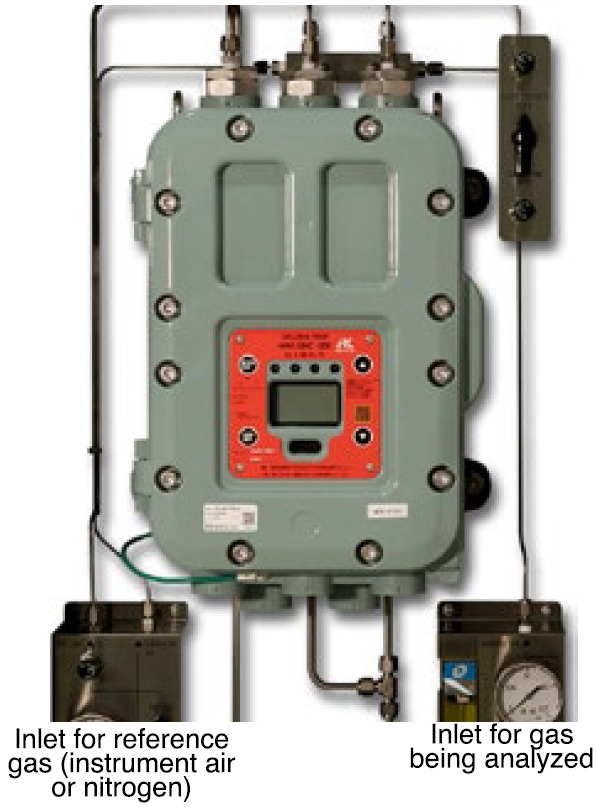 Riken Keiki Co’s OHC-800 (photo), a relatively new type of calorimeter, uses optical and sonic sensors to provide real-time monitoring with high accuracy. The instrument’s use in optimizing turbine and boiler air/fuel ratios make it of interest to O&M personnel at gas-turbine-based simple- and combined-cycle plants.
Riken Keiki Co’s OHC-800 (photo), a relatively new type of calorimeter, uses optical and sonic sensors to provide real-time monitoring with high accuracy. The instrument’s use in optimizing turbine and boiler air/fuel ratios make it of interest to O&M personnel at gas-turbine-based simple- and combined-cycle plants.
Recall that competitor gas chromatographs provide highly accurate analyses of fuel-gas composition, but do not offer real-time monitoring. And combustion-type calorimeters can offer real-time monitoring, but they generally are not accurate enough for process control.
The OHC-800’s sonic sensor measures the sound velocity of the gas, the optical sensor the refractive index of the gas. Stated advantage of the optical interferometric sensor is that because no chemical reaction is used—unlike methods relying on catalytic combustion and thermal decomposition—components do not wear out or deteriorate.
There also is no reported effect from the change in light-source intensity over time. While the sensitivity of an infrared sensor can deteriorate because of lamp ageing or cell contamination, the “light-wave interference” principle employed by the OHC-800 relies on a mirrored image unaffected by changes in light intensity.
Advantages of the OHC-800 touted by Riken Keiki in the 12-min recorded webinar produced by the manufacturer are highlighted below.
-
- High accuracy. Comparison of calorific measurements of fuel gas containing nitrogen shows the OHC-800 and gas chromatographs have comparable high accuracies, but the former’s advantage is the ability to measure calorific value continuously.
- Real-time monitoring with high response speed. Data can be updated every 0.25 seconds. The instrument’s robust design is said to accommodate all measurement environments, eliminating the risk of “measurement outages.” Response time to changes in calorific value is less than five seconds.
- Minimum effects of N2, O2, CO2, etc. Use of both optical and sonic sensors eliminates the possibility of interference from gases that do not have heat content.
- Essentially maintenance-free because the physical-based optical and sonic sensors do not require periodic calibration.
- Easy parts replacement. The OHC-800 has only four parts—sonic sensor, optical sensor, main controller, and power supply.
- Installation flexibility. Explosion proof, operating-temperature profile extends from -4F to 140F.
- No carrier gas is required; instrument air or nitrogen is used as the reference gas.
If your interest is piqued by the webinar, a field-test demo is available.

